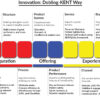
Last Sunday, while addressing a thoughtful gathering of doctors at an event organized by the Alumni of PGIMER, Chandigarh, Karnataka State Branch, I spoke about a topic that holds the potential to transform financial well-being: The Power of Passive Income. Among the various concepts I touched upon—asset allocation, compounding, real estate, and stock investing—one principle that evoked particular interest was what Benjamin Graham famously called the “Margin of Safety.”
Though briefly mentioned, this concept is profound and timeless. It deserves deeper reflection—not just for those seeking financial freedom, but especially for professionals like doctors, who often prioritize service over financial planning until much later in life.
What Is the Margin of Safety?
Benjamin Graham, the father of value investing and Warren Buffett’s mentor, introduced the concept of a “margin of safety” in his masterpiece, The Intelligent Investor. It sounds deceptively straightforward: Always invest with a cushion—some buffer that shields you when things do not go exactly as you thought.
Graham says, “The use of the margin of safety is, in short, that of making it unnecessary to estimate accurately the future.” That is, we should make our investments in such a fashion that if our predictions turn out to be adverse, we are not bankrupted.
Let’s use one of Graham’s favourite illustrations: Suppose that a railway company has to earn five times its fixed charges (e.g., interest charges) in order to be worth investing in. That buffer—the firm earning well over what it needs in order to continue existing—is the margin of safety.
A Parable from the Mahabharata
The safety margin is not an innovation. The Indian tradition has been accepting this principle for ages. In Mahabharata, when Yaksha poses the question, “What is the most wonderful thing in this world?” Yudhishthira answers, “People die every day. Nevertheless, people who survive feel they are immortal.”
This awareness of uncertainty is the foundation of the margin of safety. Life, markets, health, and relationships—all are unpredictable. The wise man plans not for the best-case scenario, but for the worst.
Margin of Safety and Passive Income
When you discuss passive income – whether it’s dividends, real estate, mutual funds, or royalties – it’s always easy to get overexcited with forecasts. “This stock will double in 5 years.” “This apartment will get ₹25,000 rent every month forever.” But what about when it doesn’t?
It’s where the margin of safety plays its role.
If your dividend earnings pay for not only luxuries, but also fundamental expenditures, you’ve accounted for a margin of safety. If your rental income persists even when one property remains idle for several months, that’s accounted for in the margin of safety. If your mutual fund SIPs are not only meant for retirement, but you’ve also accounted for several market meltdowns, you’ve incorporated a margin of safety.
A Contemporary Indian Illustration
Consider the story of one of my friend, a pediatrician in Bengaluru, who began investing in tax-free bonds and high-dividend public sector stocks in his early 40s. Rather than chasing the latest IPOs or trendy crypto, he focused on instruments that provided regular, predictable returns. He always calculated returns assuming a 20% drop in earnings and prices. He wanted investments that would still make sense even under stress.
By 55, his passive income exceeded his monthly clinician’s salaries. Part-time work, young doctor teaching, and increased time in rural health projects fill his days.
His success was not because he timed the market right, but because he followed the principle: “Hope for the best, but prepare for the worst.”
Warren Buffett’s Golden Rule
Warren Buffett, who refers to the margin of safety as “the three most important words in investing,” explains: “You don’t drive a 9,000-pound truck across a bridge that says it can hold 10,000 pounds. You drive it across a bridge that can hold 15,000 pounds.”
Your financial strategy here is the bridge. Your money, your family, your health care, your retirement are the 9,000-pound load. The investments you make—the stock, the bonds, the rentals—they collectively have to be stronger than just barely getting you by.
Passive Income Isn’t Passive Planning
Too many people assume that once you start earning passive income, the job is done. But sustainable passive income requires active planning and conservative assumptions.
Always ask:
• If this rental unit remains unoccupied for 3 months each year,
• What if this dividend-paying stock cuts its payout during a downturn?
• What if inflation averages 8% rather than 5%?
You can only sleep peacefully once you’ve constructed your investments to withstand such tempests, what Graham termed “an investor’s chief requirement.”
The Doctor’s Advantage
Doctors, like most professionals, experience fairly secure income. It’s this stability, however, that most likely breeds complacency. Investing under rosier forecasts, late entries, or excessive real estate holdings tends to leave many exposed in retirement.
It’s not early investment, but early investment intelligently, with safety, with cushion. As Graham says, “The margin of safety is always dependent upon the price paid.” Paying an excessive amount, even for superiority, erodes your cushion.
In Conclusion
Margin of safety isn’t an investment principle alone—It’s a life principle. In medicine, extra stock of key drugs is maintained. In flying, extra fuel is carried for 1.5 times the anticipated trip. Mountaineers descend before they use their last ounce of energy. All these habits exhibit the same principle: Leave room for error.
Regardless of whether you are an engineer, doctor, educator, or entrepreneur, developing several streams of passive income with an adequate margin of safety will make you live with dignity, freedom, and purpose even when uncertainty hits.
At the conclusion of my talk at PGIMER Alumni Webinar, I’ll conclude this piece with the same quote: “Wealth consists not in having great possessions, but in having few wants – and enough buffers to meet them, come what may.”
Dr. Prahlada N.B
MBBS (JJMMC), MS (PGIMER, Chandigarh).
MBA in Healthcare & Hospital Management (BITS, Pilani),
Postgraduate Certificate in Technology Leadership and Innovation (MIT, USA)
Executive Programme in Strategic Management (IIM, Lucknow)
Senior Management Programme in Healthcare Management (IIM, Kozhikode)
Advanced Certificate in AI for Digital Health and Imaging Program (IISc, Bengaluru).
Senior Professor and former Head,
Department of ENT-Head & Neck Surgery, Skull Base Surgery, Cochlear Implant Surgery.
Basaveshwara Medical College & Hospital, Chitradurga, Karnataka, India.
My Vision: I don’t want to be a genius. I want to be a person with a bundle of experience.
My Mission: Help others achieve their life’s objectives in my presence or absence!
My Values: Creating value for others.
Leave a reply
















*Dear Dr. Prahlada N.B. Sir,*
Your article on the "Margin of Safety" and its significance in modern-day passive income was enlightening. As someone interested in financial planning, I appreciate the timeless wisdom you've shared.
*Key Takeaways* *:*
– *Define Your Goals*: Clearly determine what you want to achieve through investments.
– *Diversify Strategically*: Spread investments across asset classes to minimize risk.
– *Stay Adaptable*: Adjust your strategy as market conditions and personal circumstances change.
*Additional Investment Tips* *:*
– *Assess Risk Tolerance*: Understand your comfort level with risk and invest accordingly.
– *Dollar-Cost Averaging*: Invest fixed amounts regularly to reduce timing risks.
– *Maximize Tax-Advantaged Accounts*: Utilize tax-deferred retirement accounts for optimal savings.
– *Avoid Emotional Decision-Making*: Base investment decisions on logic and analysis.
– *Stay Informed*: Continuously educate yourself on investments and market trends.
*Investment Strategies* *:*
– *Index Funds*: Invest in broad market indices for diversification and low fees.
– *Buy-and-Hold*: Adopt a long-term approach to reduce market volatility impact.
– *Income Investing*: Focus on generating regular income through dividend-paying stocks or real estate.
Your emphasis on the margin of safety as a life principle resonated deeply. Applying this principle can help ensure financial stability and peace of mind.
Thank you for sharing your expertise and experiences. I look forward to reading more of your insights.
Reply